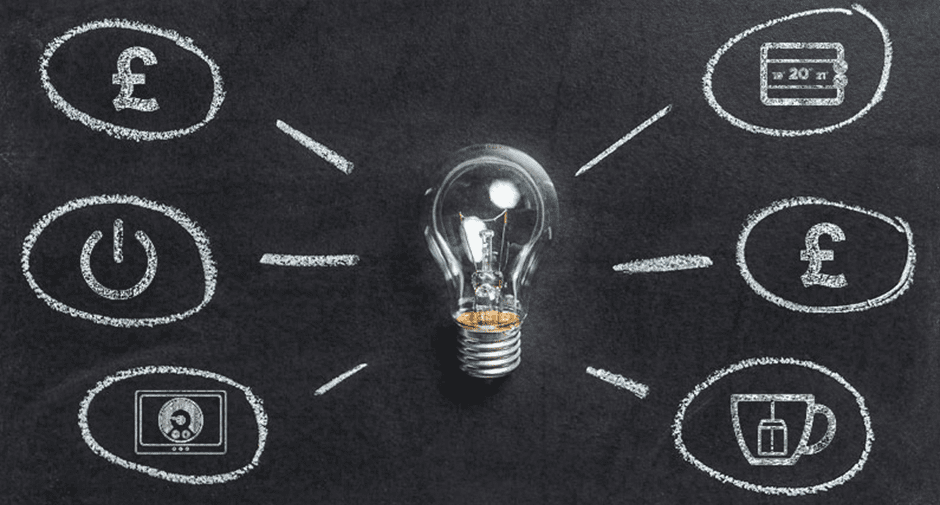There are many ways that you can increase your business savings, like working remotely, outsourcing, going paperless, switching banks, or hiring young and smart workers. But one of the best ways is to use less energy and become energy-efficient. Although there are countless methods that can be used by businesses to use less energy, this article will look at five simple steps. Saving business energy also comes with numerous added benefits.
- 1. Conduct an Energy Audit
- 2. Compare and Switch Business Energy Suppliers
- 3. Turn Off and Unplug
- 4. Employee Involvement
- 5. Renewable Energy Generation
- Benefits of Saving Business Energy
- In Conclusion business savings
1. Conduct an Energy Audit
One of the first steps in accruing business savings is to conduct an energy audit. An energy audit is conducted by a professional auditor who comes out to your business premises to inspect your business’s energy consumption. The auditor will provide you with a report stating how much energy your business uses over a certain period of time. The report will indicate where energy is used and when it is used. It will also give you an indication of how much energy your business is wasting, as well as where it is being wasted. Finally, the report will include ways in which your business can become more energy-efficient, as well as methods of implementation. If you follow the advice given in this report, your business could save up to 40% of energy, and thereby money.
2. Compare and Switch Business Energy Suppliers
When you know what your business’s energy consumption is, you can compare it to your bills to see if you are paying a fair amount. Make sure that your energy supplier is offering your business the best possible deal, and if there isn’t a different energy supplier that can better cater to the needs of your business. You can make this comparison yourself, or you can make use of business utility comparison organizations, like Business Energy Comparison, to do it for you. When you make use of comparison organizations, they do all of the research for you, while you can give all of your attention to your business.
3. Turn Off and Unplug
One of the most overlooked action steps for business savings is to go old school. As the tip states, your business can save energy and money by simply turning off light switches in unoccupied rooms and unused appliances. You can install occupancy sensors, daylight sensors, and lighting controls. Occupancy sensors will turn lights on or off when they sense motion. Daylight sensors will utilize daylight to its optimal efficiency, while also creating a balance between natural and artificial light. Lighting controls can be built into the business’s building management systems so that you can control light switches from one place. You should also unplug all possible appliances and equipment when they aren’t in use. When something is turned off but still plugged in, it still uses an amount of energy.
4. Employee Involvement
It will be nearly impossible to save energy at your business without getting the rest of the staff involved. You will have to educate your employees about how the business is wasting energy, and how it can be stopped. They have to be made aware of how important it is to save energy everywhere they can, which will encourage them to get involved in energy-saving processes. Put energy-saving ideas up around the office in places where people are sure to notice, and implement, them. When the business invests in energy-efficient appliances and equipment, employees will realize the seriousness of the venture and become more involved. Host meetings where energy efficiency is discussed and people can give it to them. Create a workplace slogan to encourage energy saving. Make saving energy as fun as possible by starting competitions and giving incentives.
5. Renewable Energy Generation
You can make your business more sustainable by investing in renewable energy technology, including solar panels, miniature wind turbines, solar and wind hybrid systems, micro-hydropower systems, geothermal water heat pumps, biomass systems, and anaerobic digestion. Some of the future methods are wave generation, solar power from space, and artificial photosynthesis. Your business will start to reduce its carbon footprint by going green, which will help with the fight against global warming. These self-generating energy methods will help your business to become more energy-independent by going off the national energy grid. Your business will become more attractive to customers and investors who are more environmentally conscious.
Savvy Home and Business owners have also read…
Easy Solar Installation in Canada: Solr Solvr Review
Benefits of Saving Business Energy
The two main benefits are that your business is saving money and becoming more sustainable. Your business’s energy costs will be reduced if it becomes energy-efficient. Your business becomes more energy-independent if you have self-generating energy sources. Because you have control over your renewable energy sources, your energy costs will be consistent and unaffected by price increases. This makes your business less reliant on the national grid. Renewable energy is sustainable due to the source’s very limited use of fossil fuels. Alternative energy resources generate very little amounts of carbon emissions, reducing your carbon footprint. If you generate more energy than you use, you can sell it back to the grid for some extra money. The planning of your business’s energy needs and consumption is easier to manage.
You will now have access to additional funding resources that are only available to businesses that use less energy and generate their own energy. Your business will also not have to pay Climate Change Levy (CCL) as part of its taxes if you save enough energy. Employees will be more motivated to work for a business that improves their working conditions by being determined to be more energy-efficient and environmentally sustainable. Your business will get a positive reputation for being sustainable and become more attractive to possible clients, buyers, and investors. Being more energy-efficient will provide your business with an advantage over your competitors.
In Conclusion business savings
This article very briefly mentions ways that your business can save money. The main focus of the piece is how your business can save money by saving energy. Five energy-saving tips are given and discussed. The benefits of saving business energy are also examined and explained.
Savvy Business leaders have also read…
How an Industrial Shed Can Improve Your Bottom Line
Increase Your Business Savings in 5 Simple Steps
Green Car Leasing: Save Money and the Environment
10 Simple Tips to Improve Energy Efficiency in Your Business

Dean Emerick is a curator on sustainability issues with ESG The Report, an online resource for SMEs and Investment professionals focusing on ESG principles. Their primary goal is to help middle-market companies automate Impact Reporting with ESG Software. Leveraging the power of AI, machine learning, and AWS to transition to a sustainable business model. Serving clients in the United States, Canada, UK, Europe, and the global community. If you want to get started, don’t forget to Get the Checklist! ✅
